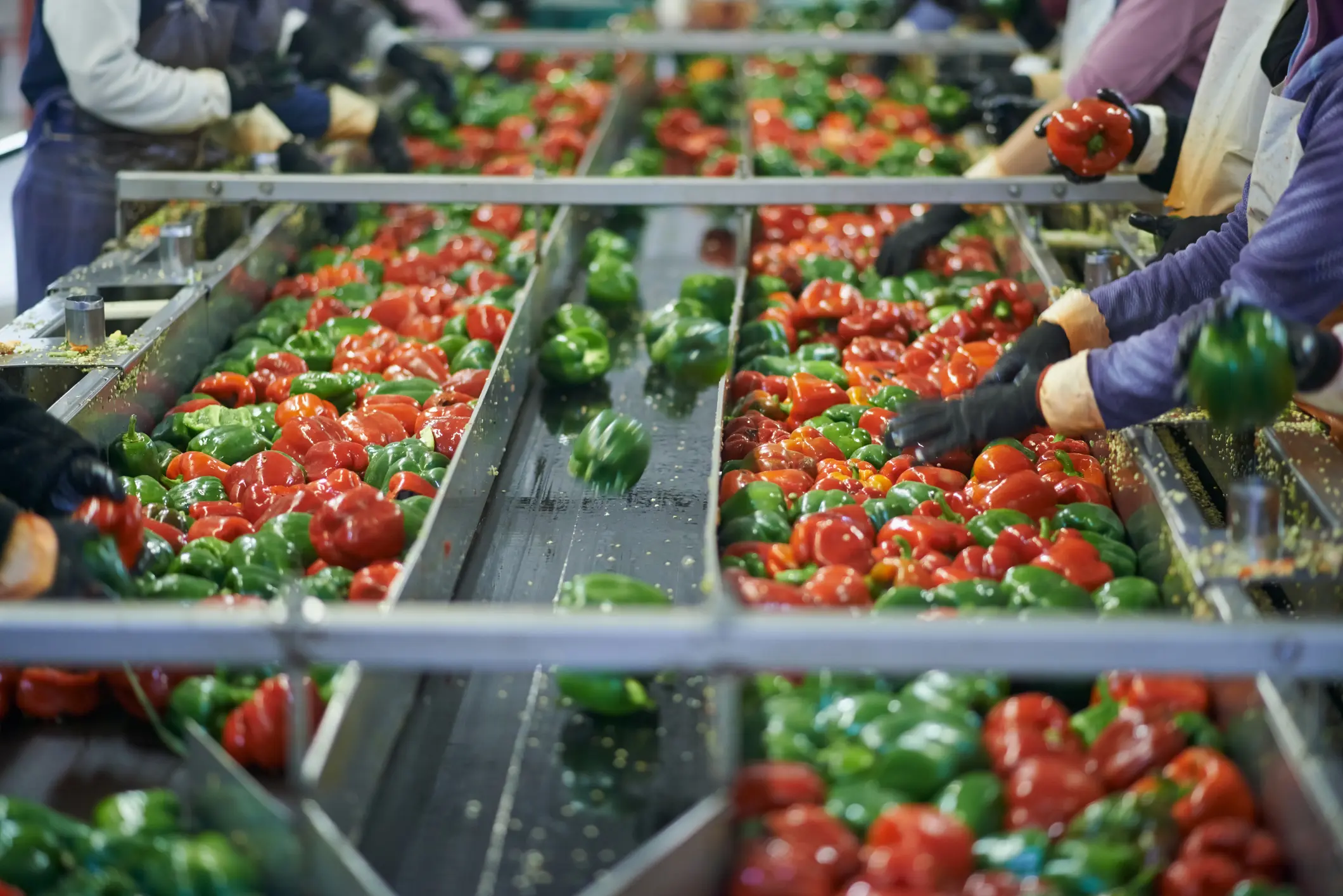What is Food Supply Chain Transparency?
Now you might be wondering, what is supply chain transparency and how does it relate to the food industry? In its simplest terms supply chain transparency can be defined as the ability to trace and interpret every step of the food production process. From ingredient sourcing to labeling and distribution, organizations that have true transparency are in touch with all of these stages.
Unlike food supply chain traceability which refers specifically to tracking the movement of a product through the supply chain, supply chain transparency involves understanding product information, ethical standards, sustainability, compliance, and more.
Transparency is essential when it comes to food safety, meeting regulatory requirements, and building consumer trust – all necessary elements of enhancing one’s food supply chain.
4 Key Benefits of Food Supply Chain Transparency
Implementing best practices for food supply chain transparency is a win-win for everyone involved. From improved regulatory compliance to fostering customer loyalty, supply chain transparency has you covered. The following is a list of the key benefits of implementing food supply chain transparency.
- Improved Food Safety
For starters improving food transparency means enhancing food safety. With increased supply chain transparency companies can more easily identify contamination points, foodborne illnesses, or allergens – both quickly and accurately. As a result, companies can isolate any affected products quickly, reducing the risk of widespread food recalls and protecting consumers. With Specright’s Specification Data Management (SDM) platform organizations can track product specifications at every stage of their journey, ensuring risks can be addressed before they become harmful.
- Regulatory Compliance
Companies around the world are feeling the increased pressures of regulatory compliance, especially when it comes to the food industry. From the Food and Drug Administration’s (FDA) Food Safety Modernization Act (FSMA) to the Europan Union’s (EU) General Food Law these regulations are far-reaching and pushing companies to reconsider how they manage their products and data.
Food transparency and food traceability work hand in hand and can make it much easier for companies to comply with these regulations. With supply chain transparency compliance is simplified by providing real-time access to data, making it easier for all stakeholders to comply with these stringent regulations.
- Building Consumer Trust
At the end of the day, consumers are much more likely to support brands that are transparent about their sourcing and production processes. By providing clear information about where ingredients come from and how products are made, companies can significantly improve their brand reputation and meet consumer demands.
With Specright, in the event of a product recall or safety outbreak companies have the ability to locate, communicate, and take accountability for their mistakes by sharing information publicly or with any necessary parties – building even greater strength between a brand and its consumers.
- Sustainability and Ethical Sourcing
From sustainable practices and environmental impact to ethical sourcing and social responsibilities, food brands are being asked to re-evaluate how their food chains operate. Supply chain transparency ensures that food manufacturers are sourcing ingredients and raw materials from suppliers that align with these sustainable and ethical standards.
In order to prove sustainable and ethical practices data collection is key. With Specright, companies are able to document and verify these practices using records and reporting.
Challenges in Achieving Transparency in the Food Supply Chain
Just like any organizational change, achieving full transparency across an entire food supply chain is no easy task and will take buy-in from all stakeholders. For starters, it is likely that many companies are dealing with fragmented data across suppliers – as a result, transparency is impossible.
With data spread across global supply chains, standards, and regulations will likely vary causing specifications and product information to be tracked differently, or not tracked at all. Managing suppliers and logistics, on top of regulatory compliance, can be hard to navigate.
And on top of siloed data and complex global food chains, implementing end-to-end transparency also comes at a high cost. This being said by sacrificing the short-term costs, transparency can offer long-term savings through improved efficiency and reduced risks down the line.
4 Innovative Strategies for Increasing Food Supply Chain Transparency
To overcome these challenges and reap the benefits of supply chain transparency organizations should consider the following strategies for driving this change.
- Leveraging Digital Tools for Real-Time Data
Digital tools such as blockchain, and Internet of Things (IoT) technologies are game changers when it comes to implementing supply chain transparency. By providing updates on product location and condition, companies can trace back their food systems and make more informed decisions.
With Specright companies can integrate these supply chain management tools with specification management to enable real-time supply chain visibility across the suppliers and retailers – ensuring end-to-end transparency no matter what.
- Artificial Intelligence (AI) and Predictive Analytics
Across the globe, artificial intelligence and predictive analytics are making their mark. With the power to identify supply chain risks ahead of time and analyze vast amounts of predictive data companies can improve their supply chain operations, improve decision-making, and eliminate risks before they become a reality.
With Specright’s newest product release companies can take advantage of advanced AI capabilities to search throughout all packaging and formulation specs further supporting food companies when it comes to transparency. SpecGPT empowers organizations to gain instant access to their specification data and ask questions to gather further information.
By improving transparency and traceability systems communication between food companies are their suppliers can be significantly improved. By uniting various parties through digital tools and data management systems, supply chain operations can flow more seamlessly.
With Specright’s centralized data platform, organizations can collaborate with internal and external stakeholders helping to create a more transparent and efficient supply chain ecosystem.
- Data Standardization Across the Supply Chain
Ultimately, none of the above benefits are valuable with data standardization across your supply chain. In order to unite stakeholders and leverage advanced AI technology organizations have to start with standardized data formats for ingredients, processes, and regulatory compliance.
Specright helps companies like yours develop easy templates and processes for data consistency and standardization, improving overall supply chain transparency. By providing a single source of truth for all product and supplier data, Specright helps companies maintain clarity and consistency across their entire supply network.
Conclusion: The Path to a Transparent Food Supply Chain
Achieving transparency in your company’s supply chain is more than just a nice to have – it is essential for ensuring safety, meeting regulatory requirements, and building consumer trust. In the end, the benefits of transparency far outweigh the challenges and with the use of the right strategies and tools, companies can be on their way to creating more transparent, efficient, and trustworthy food supply chains.
From leveraging cutting-edge technologies to fostering collaboration with suppliers, the path to transparency requires a multi-faceted approach. By implementing these strategies and utilizing platforms like Specright, food companies can achieve complete traceability and transparency from farm to table.
Are you ready to take the next step in enhancing your food supply chain transparency? Discover how Specright’s platform can help you achieve complete transparency and request a demo today.
Explore More Blogs
Get Started
With Specright’s Solution Suite, you can digitize, centralize, and link your specification data to drive efficiencies, intelligence, traceability, and collaboration within your organization and across your supply chain network.




